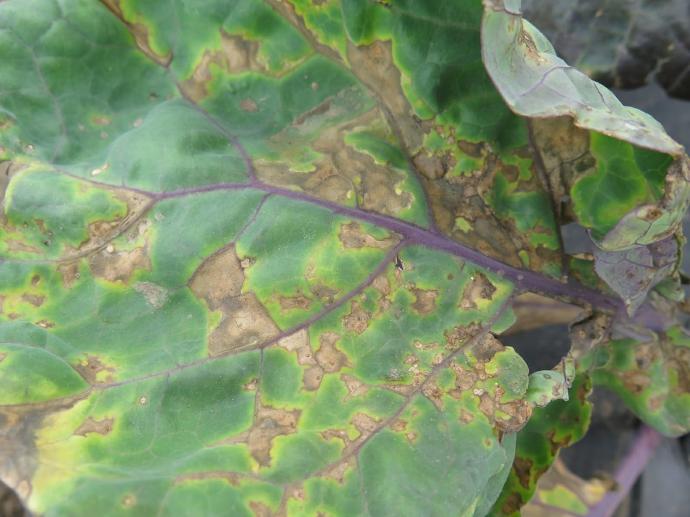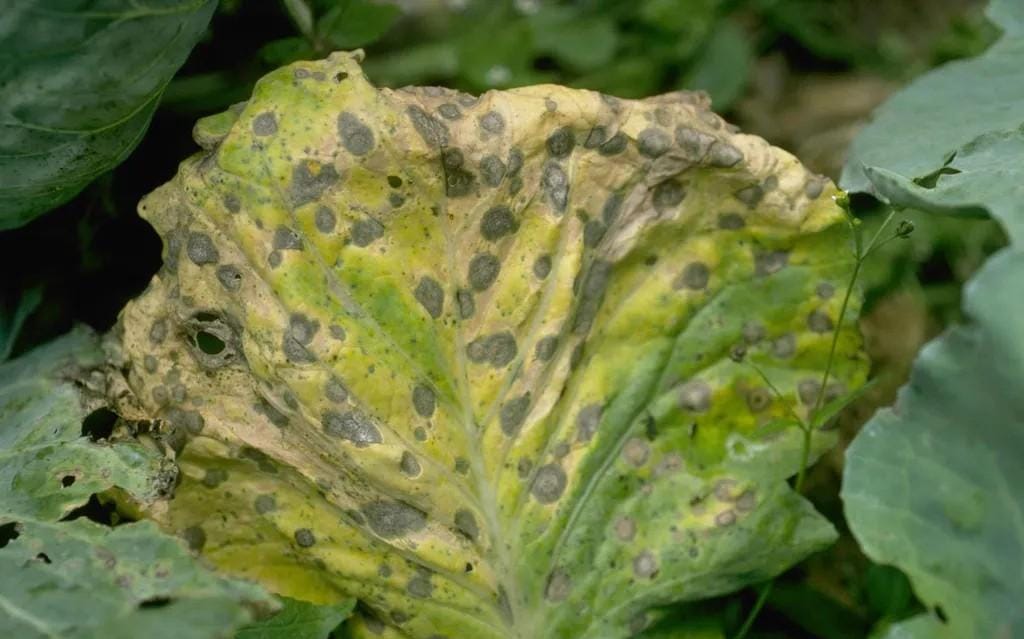Kohlrabi Plant
Kohlrabi is an annual, 12-24 inches tall, and frost-tolerant. It prefers well-drained, fertile soil in full sun to partial shade. Keep the soil moist. Kohlrabi is edible but not medicinal.
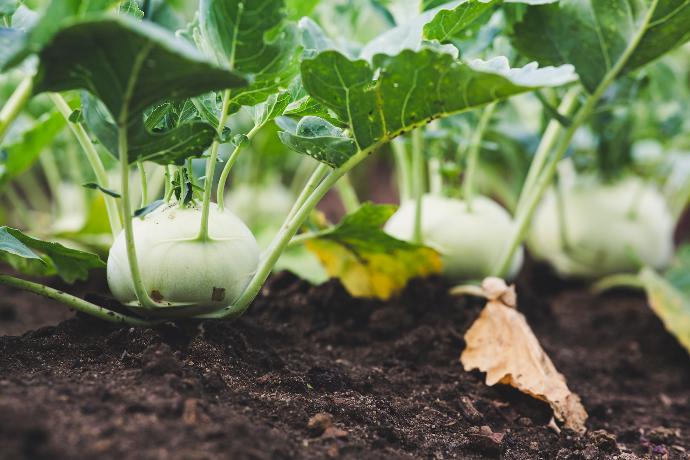
Habit
Annual
Height
0.3 to 1.0 m
Growth
Moderate
Soil
Well-drained, Loamy
Shade
Full Sun to partial shade
Moisture
Moist
Edible
Yes
Medicinal
No
Origin
Europe
Climatic Condition
Temperate, Subtropical
Temperature (°)
15°C to 25°C
Humidity (%)
60% to 70%
Potting media
50% Loam, 30% Sand, 20% Compost
Fertilizers
Balanced Fertilizers
Watering
Regular watering
Plant Weight
0.5 to 1.0 kg
Flowering Time
Spring to Summer
Soil Ph level
6.0 to 7.5
Water Ph level
6.0 to 65
Soil EC
0.4 to 0.6 mS/cm
Yield Per Plant
2 to 4 kg per plant
NPK ratio
10 :10:10 or 20 :10:10
life Span
2 to 3 years
Health Benefits
High in Fiber, Nutrient-dense
Suggested Grow Media or Potting Mix ?
50% loamy soil, 30% compost, 20% sand
Suggested Fertigation/Fertilizers
Fertilize every 2 weeks with a balanced fertilizer.
Common Diseases and Remedies
Alternaria Leaf Spot , Black Rot .
Fairly defined as margins brown colour rusty appearance , Angular or V shaped chlorotic lesions along with leaf edges .
Prune and remove heavily effected leaves , Spray Bleaching Powder 10 gr/plant .
HEALTH BENEFITS
High in fiber, vitamin C, and antioxidants; good for digestion and blood sugar control.
What Is An Kohlrabi ?
Kohlrabi is a biennial vegetable that belongs to the cruciferous family, the same family as cabbage, broccoli, and kale. They resemble turnips and onions, but are cultivated for their swollen stems that grow above the ground. Kohlrabi has a crunchy texture and a mild, slightly sweet taste, and can be used in a wide variety of dishes.
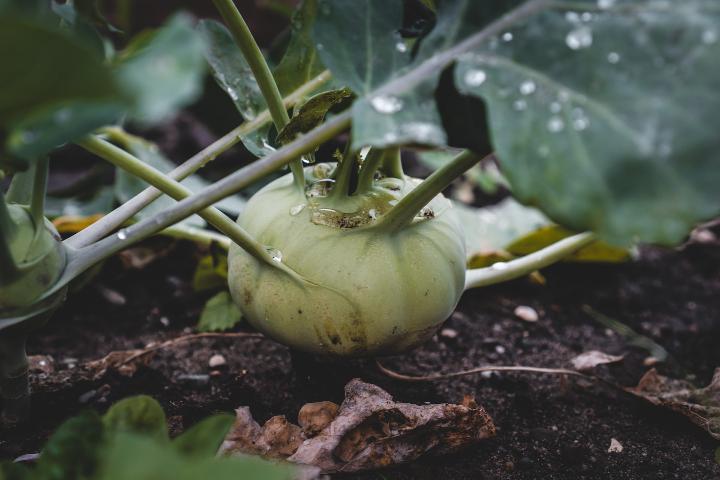
What Are The Different Types Of Kohlrabi Plants?
1. Early White Vienna
This variety is one of the most common varieties of kohlrabi. It has a light green skin, white, soft flesh, and a mellow, slightly sweet taste.
2. Purple Vienna
Similar to the early White Vienna, but with purple skin. The flesh is also white and has a gentle taste. The purple colour adds visual appeal to the dish.
3. Hummingbird F1
This hybrid variety produces uniformly spherical bulbs with smooth, light green skin. It has a crunchy texture and sweet taste, making it perfect for eating raw or adding to salads.
4. Grand Duke
Known for its large, round bulbs and refreshing, sweet flavour. It has a light green shell with slight purple stripes.
5. Winner F1
Another hybrid variety with smooth light green skin and soft white flesh. It is known for its early ripening and good taste.
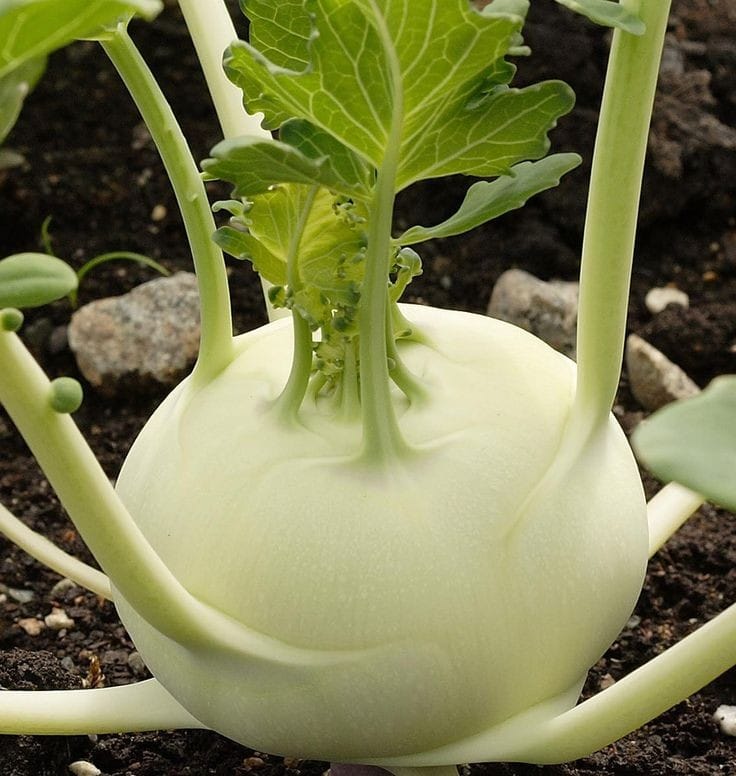
How to Care Kohlrabi plants ?
1. Location
Kohlrabi can be grown in a variety of locations, but it grows best in cool and warm climates. It prefers temperatures between 10 and 24 degrees Celsius and tolerates light frosts.
2. Sunshine
Sunlight is essential for the healthy growth of kohlrabi plants. When choosing a location to grow kohlrabi, prefer a location with plenty of sunlight. H. At least 6 to 8 hours of direct sunlight per day. However, kohlrabi tolerates partial shade in particularly hot climates and midsummer. If this is the case, look for a spot that gets sun in the morning and shade in the afternoon to protect the plant from intense heat.
3. Soil
Choosing the right soil is important for successful kohlrabi cultivation. Kohlrabi grows in fertile, well-drained soil that is rich in organic matter. The optimum pH value for soil is between 6.0 and 7.5, which is slightly acidic to neutral. Prepare the soil by mixing in compost or well-rotted manure to improve texture, fertility, and moisture retention.
4. Hydration
Hydration is essential for the growth of kohlrabi plants. This vegetable requires consistent moisture to grow healthy roots, leaves, and bulbs. Keep the soil evenly moist and not waterlogged throughout the growing season. Water thoroughly so that the water reaches the roots. Check soil moisture regularly by feeling the top few inches of soil and be sure to water if it feels dry.
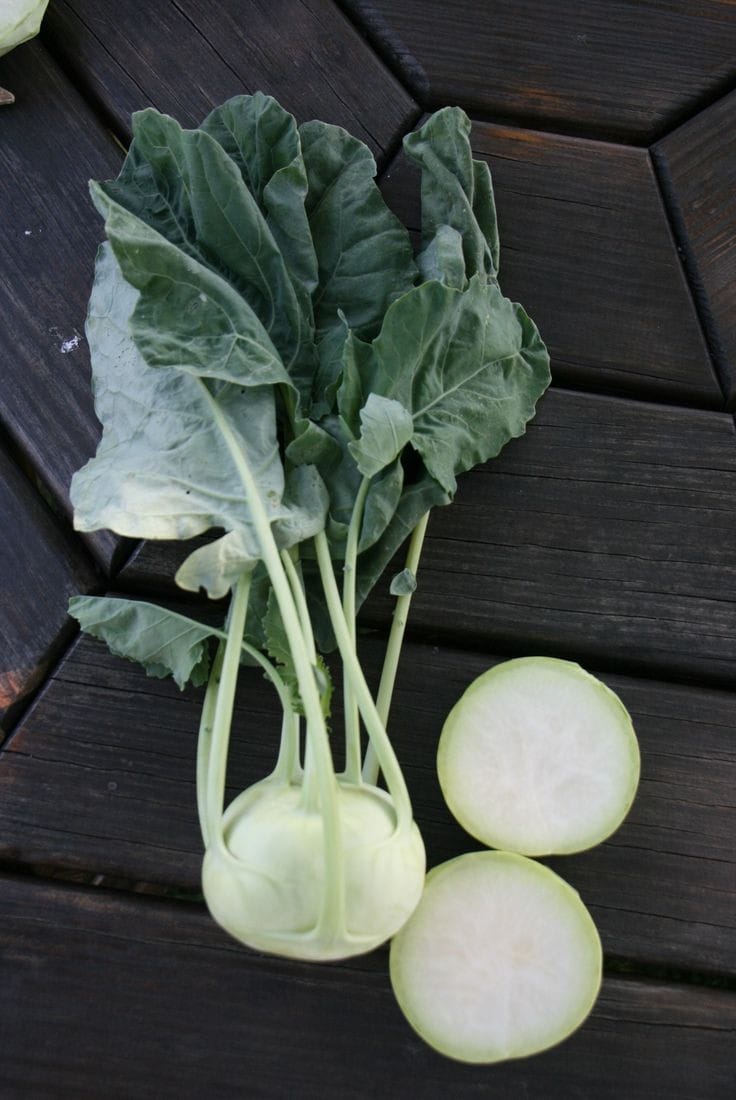
5. Nourishment
Providing the kohlrabi plant with proper nutrients is very important for its growth and development. Before planting, start by preparing the soil with well-composted organic matter. During the growing season, apply a balanced fertilizer with a 10-10-10 or similar formula to provide important nutrients such as nitrogen, phosphorous, and potassium. Fertilization is usually done every 4-6 weeks.
6. Issues
Kohlrabi is susceptible to pests such as aphids, cabbage beetles, flea beetles, and cabbage loopers. Common diseases that affect kohlrabi include powdery mildew, kohlrabi, and black rot. Kohlrabi is a cool season crop. Or, it responds to high temperatures by flowering and setting seeds early.
What are the Benefits of Kohlrabi Plant ?
Kohlrabi is low in calories and high in fiber, making it a nutritious addition to a balanced diet. Kohlrabi can be eaten raw or cooked and has many uses in the kitchen. With its crunchy texture and slightly sweet and gentle flavour, it goes well with a variety of dishes. It can be sliced or grated in salads, roasted or sautéed as a side dish, or added to soups and stews. Kohlrabi contains antioxidants such as vitamin C and phytochemicals that protect cells from free radical damage and reduce the risk of chronic diseases such as heart disease and cancer. Reduces The high fiber content in kohlrabi promotes digestive health by supporting regular bowel movements and maintaining intestinal health. Fiber also helps regulate blood sugar levels and can lower cholesterol levels. Kohlrabi is low in calories and high in fiber, making it a filling and nutritious option for people looking to control their weight or consume more nutritious foods.
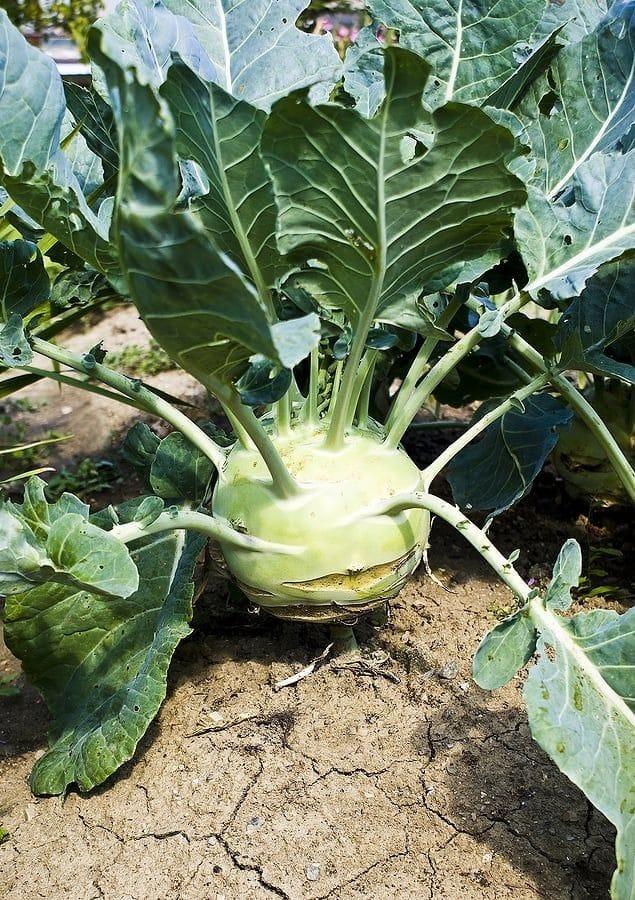
FAQs About Growing Kohlrabi
1. Are kohlrabi leaves edible ?
Yes, kohlrabi leaves are edible. Kohlrabi leaves, also called kohlrabi leaves, are edible and highly nutritious.
2. What does kohlrabi taste like ?
Kohlrabi has a crunchy texture similar to broccoli stalks and a mild, slightly sweet flavour.
3. Can you grow kohlrabi in containers ?
Yes, kohlrabi can be grown in containers, making it a great option for those with limited garden space.
4. When is kohlrabi in season ?
Kohlrabi is a cool season plant that is usually in season in spring and fall.
5. How do I know when to harvest kohlrabi ?
Kohlrabi is ready to harvest when the bulbs reach about 2 to 3 inches in diameter.

